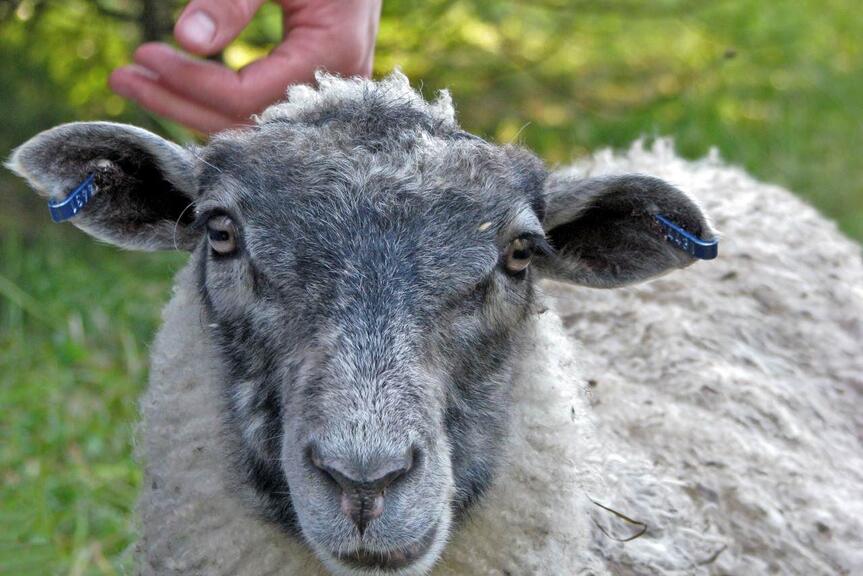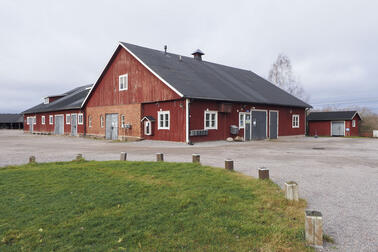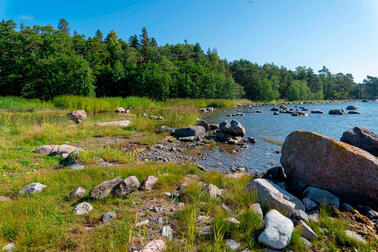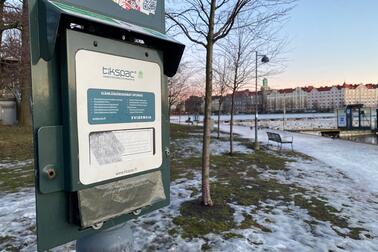
A few years ago, Matti Lipponen, the author of the proposal to have grazing sheep in the Uutela outdoor recreation area, took part in a guided walking tour organised by the Museum of Finnish Architecture on Lammassaari island in Vanhankaupunginlahti bay. He saw cows grazing in the northern part of the island, on the edge of a nature reserve. He learned that the cows helped keep open the coastal meadows, which are important to birds.
After the nature tour, Lipponen remembered that visual artist Miina Äkkijyrkkä used to have cows grazing on the Skata farm in Uutela at the turn of the 2000s. Why couldn’t Uutela have pastures again, also for the joy of people who go walking there? He decided to make an OmaStadi proposal on the matter.
Caring for nature in an environmentally friendly way
“As regards how it will be done, I would like there to be responsibility for the welfare of the sheep as well as careful monitoring and readiness for possible inspections as necessary, for example with regard to the size and locations of the fenced pastures, and the achievement of the best possible coexistence between people and the enchanting roe deer found in the forests of Uutela,” says Lipponen.
Lipponen submitted his proposal in October 2020. A year later, the proposal for grazing in the Uutela outdoor recreation area was successful in the OmaStadi (participatory budgeting) vote, receiving 1,123 votes. Planning of the project began in spring 2022, and the construction of fences and signposts started the following spring.
Sheep can to graze freely in herds
At the end of May, 24 sheep arrived in Uutela, where they graze three pastures in flocks of different sizes. The sheep were carefully selected by sheep farmer Elina Kaven from Markkula Manor. Their task is to delight people spending time in Uutela and to help maintain the traditional rural landscape of the Skata farm and the biodiversity of the area.
Armi Koskela, volunteer work coordinator at the Urban Environment Division, has been responsible for the implementation of the proposal in Uutela together with other parties. The project has involved a large number of experts from the city, and there has also been cooperation with associations operating in the area.
“The city received the proposal really well, because it’s a win-win situation. The city avoids the additional costs of mowing the pastures, and the animals live and grow by natural grazing,” Koskela says.
Coexistence between species
“The new pastures will also benefit species like starlings, and nesting boxes can be made for them in the area,” says Environmental Inspector Raimo Pakarinen.
City residents have been wondering about the future coexistence of sheep with other species living there and the proximity of the dog park. The current distance between the sheep hurdle and the dog park is three metres.
“The sheep will move further away if there are a lot of barking dogs in the park,” sheep farmer Kaven says.
“The dogs won’t be able to dig their way under the new dog fence,” project manager Nina Mouhu confirms.
Welcome to walk, cycle and enjoy the outdoors
There are two kinds of sheep on the Skata farm. In addition to the sheep from Markkula Manor, there are the sheep of Skata’s Pks4H (4H associations of the Capital Region) petting zoo in a more restricted area, right next to the Skata farm. These sheep can be visited on summer Tuesdays at 17.00–18.00 during open pasture visits from the beginning of June until the second Tuesday of August. By contrast, the Markkula sheep want to keep to themselves at all times. The area will also have a summer shop run by 4H’s young entrepreneurs.
“Through OmaStadi, we have been able to make many improvements in the key area of Uutela, the surroundings of the Skata farm. In the previous OmaStadi rounds, we have managed to restore the red barn in the vicinity of the Skata farm, straighten the stone wall near the barn and build a traditional fence. In the same area where Uutela’s hut is located, there is also the Helsinki Huussi toilet and new picnic table and bench sets financed by OmaStadi,” Mouhu says.
The historic landscape is gently cared for, thanks to OmaStadi participatory budgeting
Meadows, grasslands and grazed woodlands resulting from traditional agriculture are referred to as traditional rural biotopes. Without proper maintenance, the diverse species that live in them are in danger of extinction. Mowing the meadows by machine would leave ugly marks on the terrain, so the use of grazing animals is justified. Traditional rural landscapes have been managed for a long time in, for example, the meadows of Laajalahti and Vartiosaari and the Bruksviken nature reserve in Östersundom.
The third renewed round of participatory budgeting in Helsinki is to be launched in October. On 2–15 October, Helsinki residents can submit their ideas on how the city should use €8.8 million.


